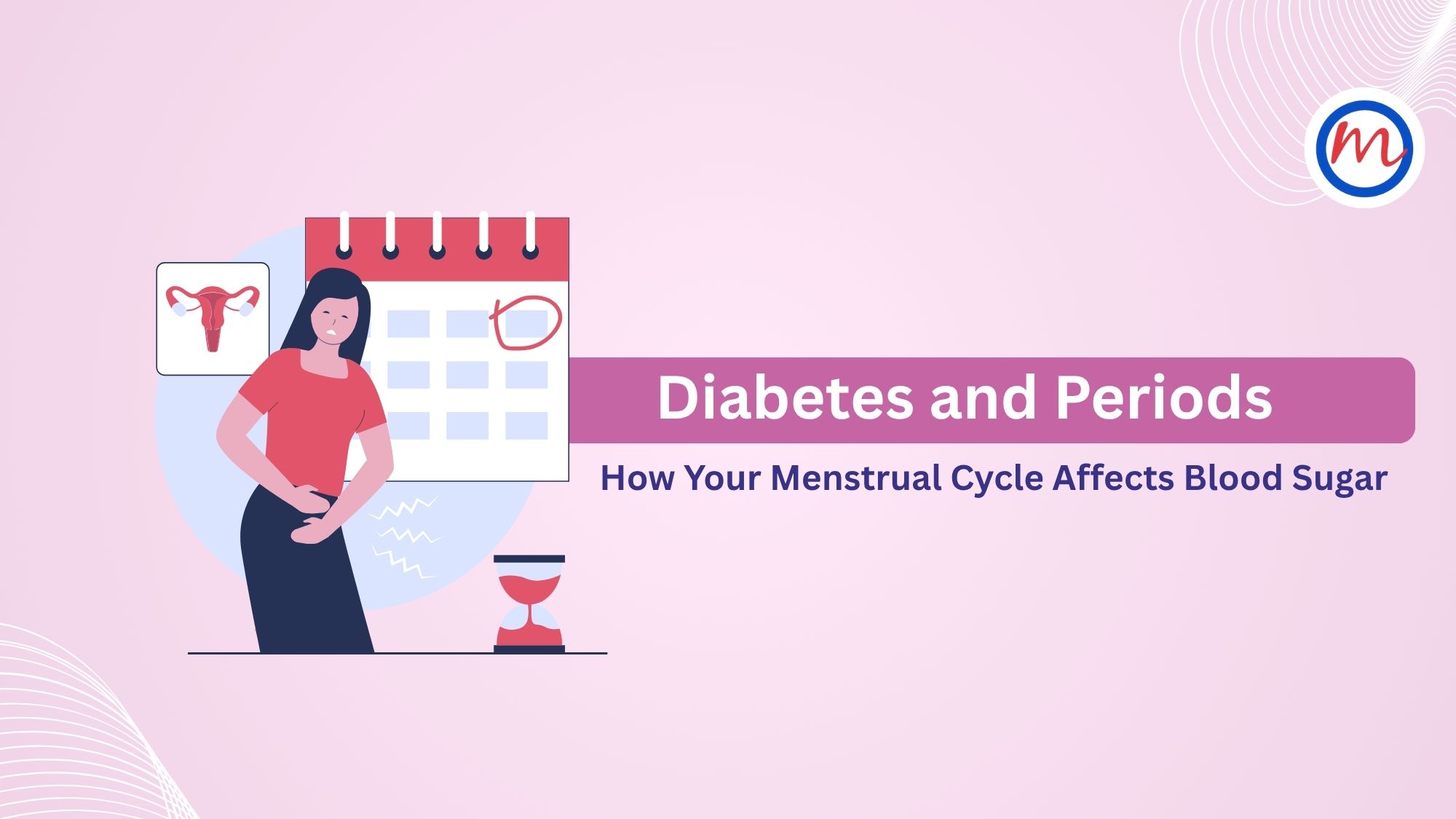Diabetes and Periods: How Your Menstrual Cycle Affects Blood Sugar
Introduction
For many women with diabetes, blood sugar levels do not just fluctuate based on food or medication—they also shift throughout the menstrual cycle. Hormonal changes before and during periods can significantly impact insulin sensitivity, making it harder to control diabetes. Understanding the connection between your cycle and blood sugar is key to better diabetes management.
Why Your Menstrual Cycle Affects Blood Sugar
Throughout the menstrual cycle, levels of oestrogen and progesterone rise and fall. These hormonal shifts can:
- Affects how your body responds to and uses insulin
- Alter your appetite and food cravings
- Change energy levels and mood
These fluctuations can begin a few days before your period and continue into the first few days of bleeding.
Common Blood Sugar Patterns During Your Cycle
- Before Your Period (Luteal Phase)
- Progesterone levels rise, which may increase insulin resistance.
- Blood sugars may run higher than usual.
- Cravings for sweets and carbs may also lead to higher glucose levels.
- During Your Period
- Hormone levels drop suddenly.
- Some women experience better blood sugar control during this phase.
- However, cramps, fatigue and low appetite may also lead to skipped meals or irregular medication, causing low blood sugar.
- After Your Period (Follicular Phase)
- Improved insulin sensitivity and more predictable blood sugar levels.
- This is typically when blood sugars stabilise.
Symptoms of Periods That Worsen With Diabetes
- Heavier or more painful periods
- Mood swings, anxiety or irritability
- Fatigue, headaches or brain fog
- Increased cravings, especially for sugar
- Poor sleep, which also affects blood sugar
How to Track Blood Sugar Changes During Periods
- Keep a Menstrual and Glucose Diary
Record your cycle days, blood sugar levels, mood, cravings and symptoms. Over 2–3 months, patterns will begin to emerge. - Use Apps
Period tracker apps like Clue or Flo can help you anticipate hormonal shifts. Pair them with diabetes apps for holistic monitoring. - Note Medication Sensitivity
Some women may require minor insulin dose adjustments during specific phases of their cycle. Never make changes without medical advice.
Tips to Manage Blood Sugar During Periods
- Eat Smart
- Include complex carbohydrates, protein and healthy fats to stabilise blood sugar.
- Avoid sugary snacks, even if cravings are strong—choose healthier alternatives like nuts or fruit.
- Stay Active
Regular movement reduces stress and helps manage blood sugar and cramps. Choose light exercises like yoga or walking if energy is low.
- Manage Stress and Sleep
Sleep disturbances during PMS can worsen blood sugar. Try relaxation techniques and keep a consistent bedtime routine.
- Stay Hydrated
Water retention is common, but dehydration can worsen blood sugar control. Drink plenty of water, especially during PMS.
When to Seek Help
- If blood sugar swings are extreme or interfere with your daily life
- If your period is irregular, missed or extremely painful
- If mood symptoms are severe or you suspect PCOS or a hormonal imbalance
Conclusion
Your menstrual cycle is more than a monthly occurrence—it directly affects your diabetes management. With consistent tracking, lifestyle adjustments and support from your care team, you can stay in control of both your cycle and your blood sugar.

Leave a Reply